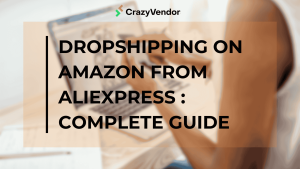Every click and conversion matters in the competitive world of e-commerce. Businesses are always looking for new and imaginative methods to contact their target audience and increase revenue. Dynamic advertisements, also known as product ads or catalog ads, are an effective tool for achieving your e-commerce objectives.
What exactly are Dynamic Ads?
Dynamic adverts are a sort of internet advertising that displays individualized product suggestions to potential buyers based on real-time data. These advertisements are often presented on sites such as Facebook, Instagram, and Google, and they feature things that the user has already viewed or searched for. If a consumer enters your e-commerce site and browses a certain product category, they may later see dynamic advertisements for related goods from your business while surfing the web or social media.
How Do Dynamic Ads Work?
Dynamic advertisements function by utilizing a product feed, which is a file that provides information about all of your items, such as product descriptions, pricing, and photos. This product stream is linked to your ad platform, such as Facebook Ads or Google Ads. When a user views or interacts with your items on your website, this information is saved in their browser cookies. The ad platform then utilizes this information to offer appropriate product advertising to the consumer.

The Advantages of Using Dynamic Ads
There are several advantages to adopting dynamic advertisements for your e-commerce firm. Here are a few important advantages:
- Increased Relevancy: Because dynamic advertising are based on prior behavior and interests, they are very relevant to the specific user. This raises the chances of the user clicking on the ad and making a purchase.
- Improved Conversion Rates: Studies have shown that dynamic advertisements may raise conversion rates by up to 50% when compared to traditional static ads. This is because dynamic adverts are more likely to pique the user’s interest and attention.
- Personalized Customer Experience: Dynamic advertisements create a more personalized customer experience by displaying items in which the consumer is already interested. This can assist to strengthen consumer interactions and enhance brand loyalty.
- Effective Retargeting: Dynamic advertising are a wonderful option for retargeting clients who have abandoned their shopping carts or showed interest in your items but have not yet purchased. This can assist to re-engage potential clients and boost revenue.
- Measurable Results: Dynamic advertisements can be readily tracked and measured, allowing you to understand how they are doing and make any modifications. This might assist you in increasing your return on investment (ROI).
How to Design Dynamic Ads
Creating dynamic advertisements is an easy process. Here are the fundamental steps:
- Make a product feed: If you don’t already have one, you’ll need to make one. This can be done manually or with the help of a feed management tool.
- Connect your product feed to your ad platform: Once you’ve generated a product feed, you’ll need to connect it to your preferred ad platform. This may be done under the ad platform’s settings.
- Develop your ad templates: You will need to develop ad templates that will display your product details. This comprises the ad format (e.g., carousel, single picture), ad content, and call to action.
- Establish your targeting choices: You’ll need to establish your targeting settings so that your adverts are seen to the proper individuals. This includes targeting based on geography, demographics, hobbies, and historical activity.
- Monitor and adjust your campaigns: Once your advertisements are up, you must monitor their performance and make any necessary modifications. Tracking your click-through rates, conversion rates, and other crucial data is part of this.

More information on dynamic advertisements and how to utilize them successfully for your e-commerce business may be found here:
Using Dynamic Ads to Increase E-Commerce Success
For good reason, dynamic advertisements have become a staple in the e-commerce marketing arsenal. Their ability to give individualized product suggestions based on real-time user behavior has proven to be a very successful technique to enhance conversions and revenue. However, in order to properly capitalize on the potential of dynamic advertisements, they must be intelligently optimized.
1. Quality Product Feed is the Foundation
The foundation of good dynamic advertisements is a rich product feed. It acts as the data source for your advertisements, ensuring that the correct information about your items is presented. Spend time building a thorough and well-structured product feed that contains product descriptions, photos, pricing, and other pertinent information.
2. Audience Segmentation with a Specific Goal
Don’t use dynamic ad campaigns to cast a wide net. Instead, divide your audience into smaller, more specialized groups based on demographics, hobbies, and previous purchases. This enables you to personalize your ad messaging and product suggestions for each target segment, boosting the chance of relevancy and engagement.
3. Utilize User Behavior Data
Dynamic advertisements thrive at leveraging user behavior data. Personalize your ad content by using data from website visitors, product views, and abandoned carts. Show items that users have indicated interest in, or retarget those who have showed interest but have not yet converted.
4. Continuous Improvement Through A/B Testing
Test different ad styles, headlines, ad language, and pictures on a regular basis to evaluate what works best with your target demographic. You may use A/B testing to determine the most effective combinations and tailor your ad campaigns for maximum impact.
5. Maintain and Improve
Dynamic advertisements are not a one-and-done strategy. Monitor the effectiveness of your campaigns on a regular basis and examine important indicators such as click-through rates, conversion rates, and cost-per-acquisition (CPA). Identify areas for improvement and make necessary modifications to maintain peak performance.
6. Use Dynamic Product Ads on Several Platforms
Don’t restrict yourself to just one platform. Use dynamic product advertisements across many platforms, such as Facebook, Instagram, Google advertisements, and your own website. This broadens your reach and makes your items more visible to a larger audience.
7. Accept Automation for Increased Efficiency
Use automation technologies to simplify your dynamic ad campaigns. Automate ad development, scheduling, and optimization to save up time for strategic planning and campaign management.

8. Connect to Customer Relationship Management (CRM).
Connect your dynamic ad campaigns to your CRM system for a complete picture of consumer interactions and preferences. This allows you to adapt advertising material based on customer data and increase client engagement across all touchpoints.
9. Keep up with Ad Platform Updates
Dynamic ad systems are continually growing, with new features and capabilities being added. Maintain a competitive advantage by staying up to date on the newest improvements and using them into your campaigns.
10. Seek Professional Advice
If you’re new to dynamic advertisements or lack in-house skills, consider collaborating with an e-commerce advertising marketing firm or consultant. They can advise you, optimize your efforts, and assist you in meeting your marketing objectives.
Conclusion
Dynamic advertising are a strong tool that may help you increase your e-commerce sales. You may improve the relevance of your advertising, increase conversion rates, and deliver a more customized consumer experience by employing real-time data to provide tailored product suggestions. If you aren’t currently using dynamic advertisements, I recommend that you do so. You might be amazed at how much they can help your business expand.
By implementing these optimization tactics, you can leverage the power of dynamic advertisements to efficiently reach your target audience, increase sales, and propel your e-commerce firm to new heights. Embrace the potential of customization and data-driven marketing to improve your e-commerce advertising and achieve long-term success.





